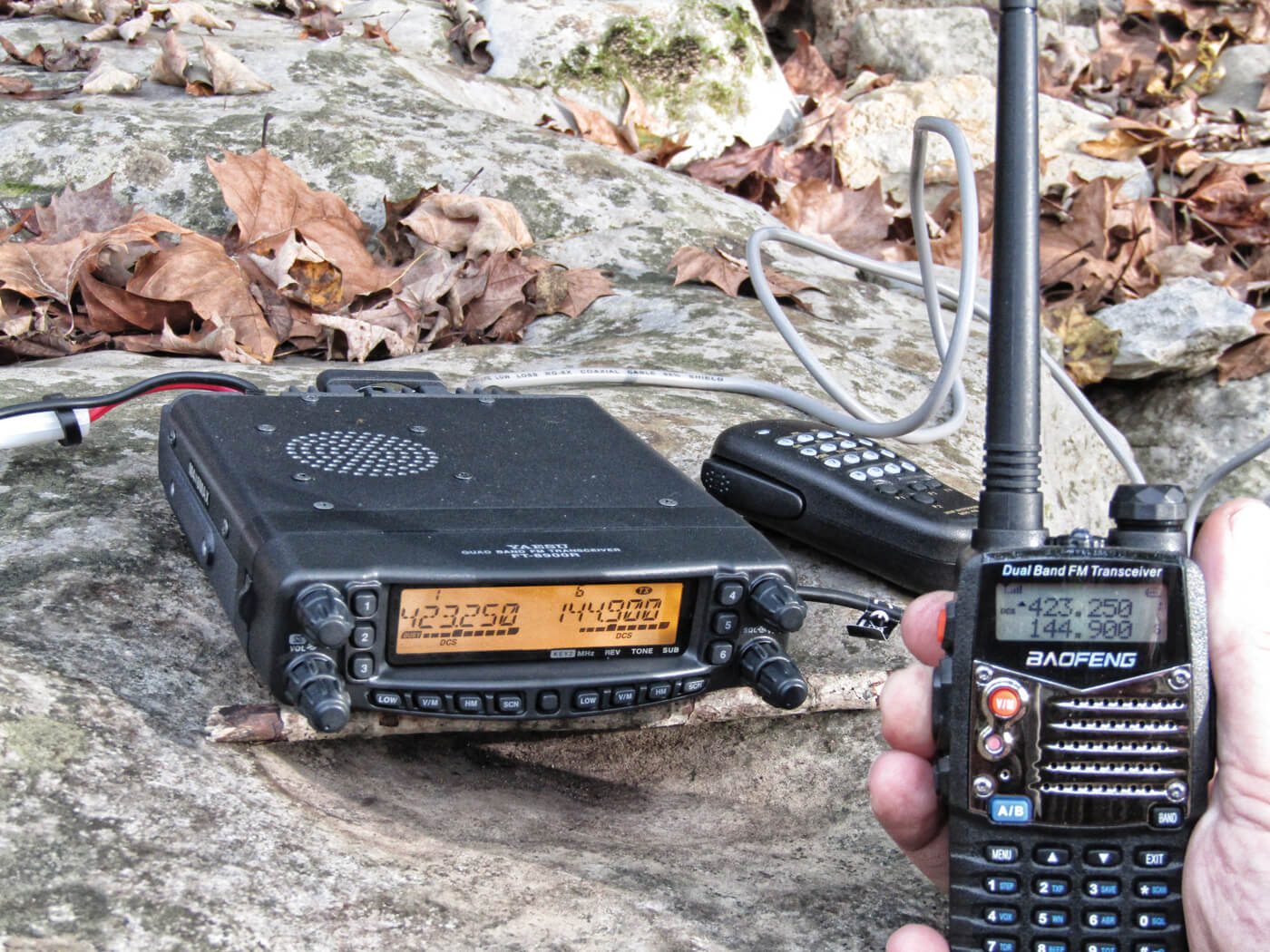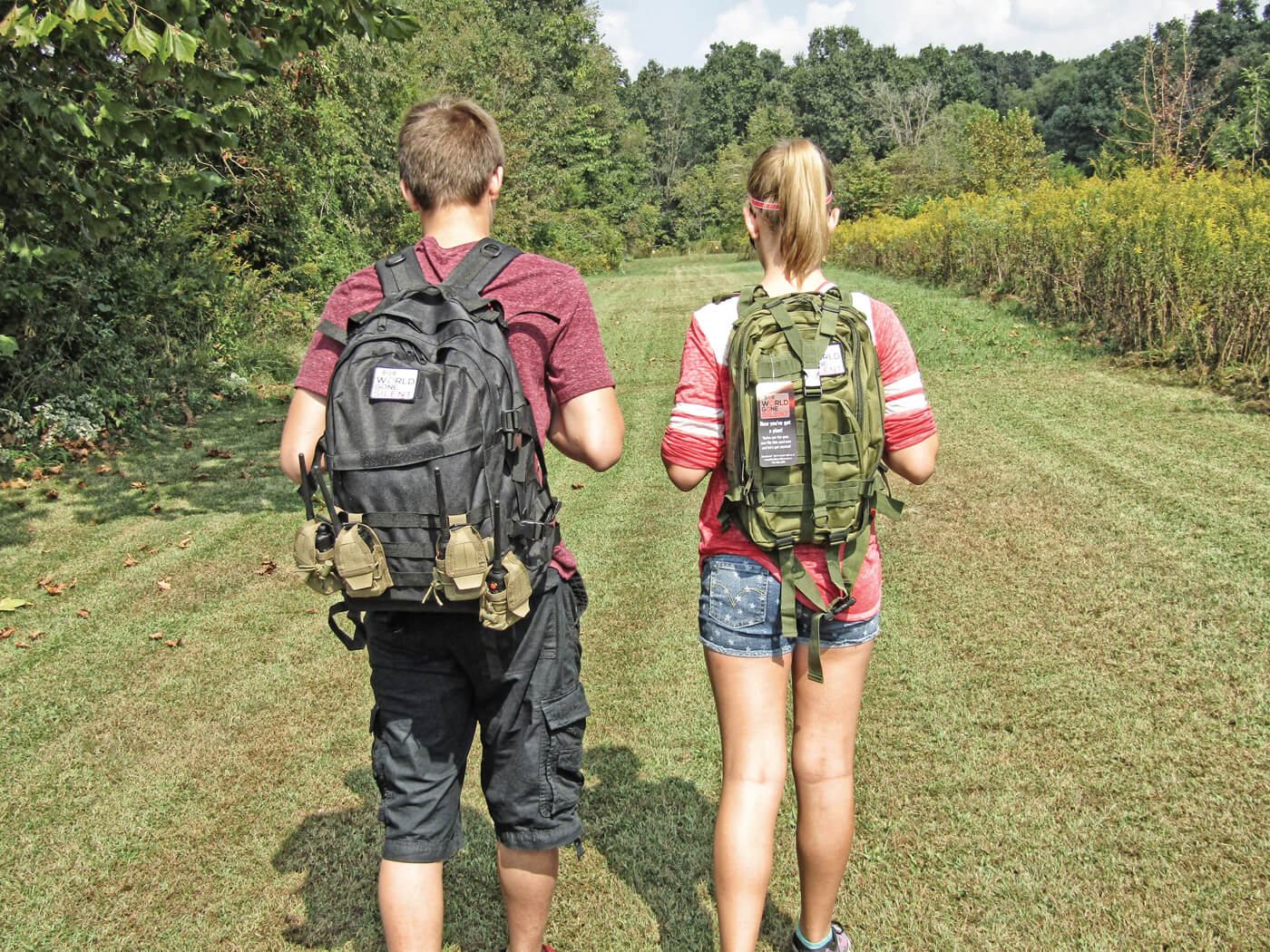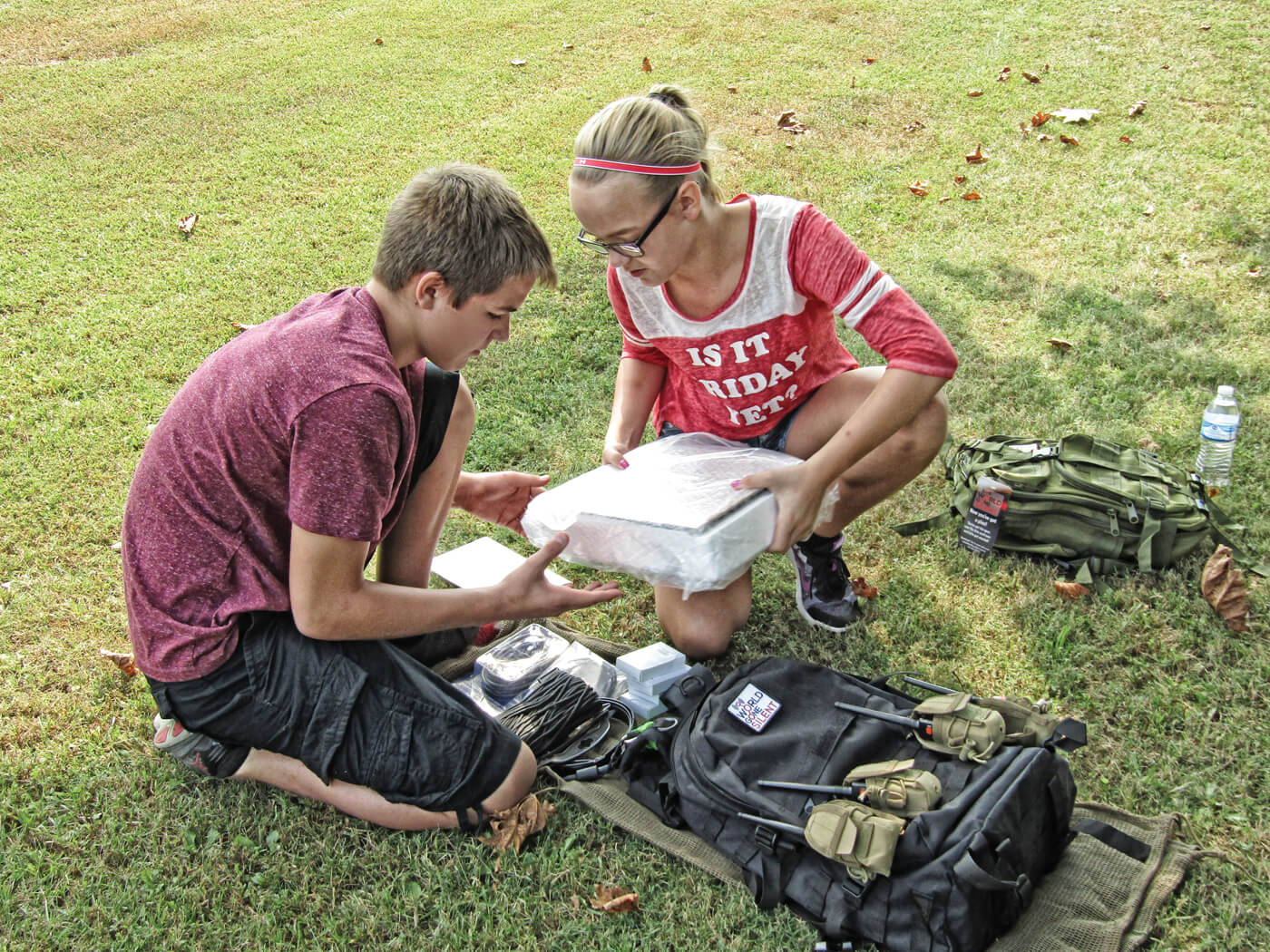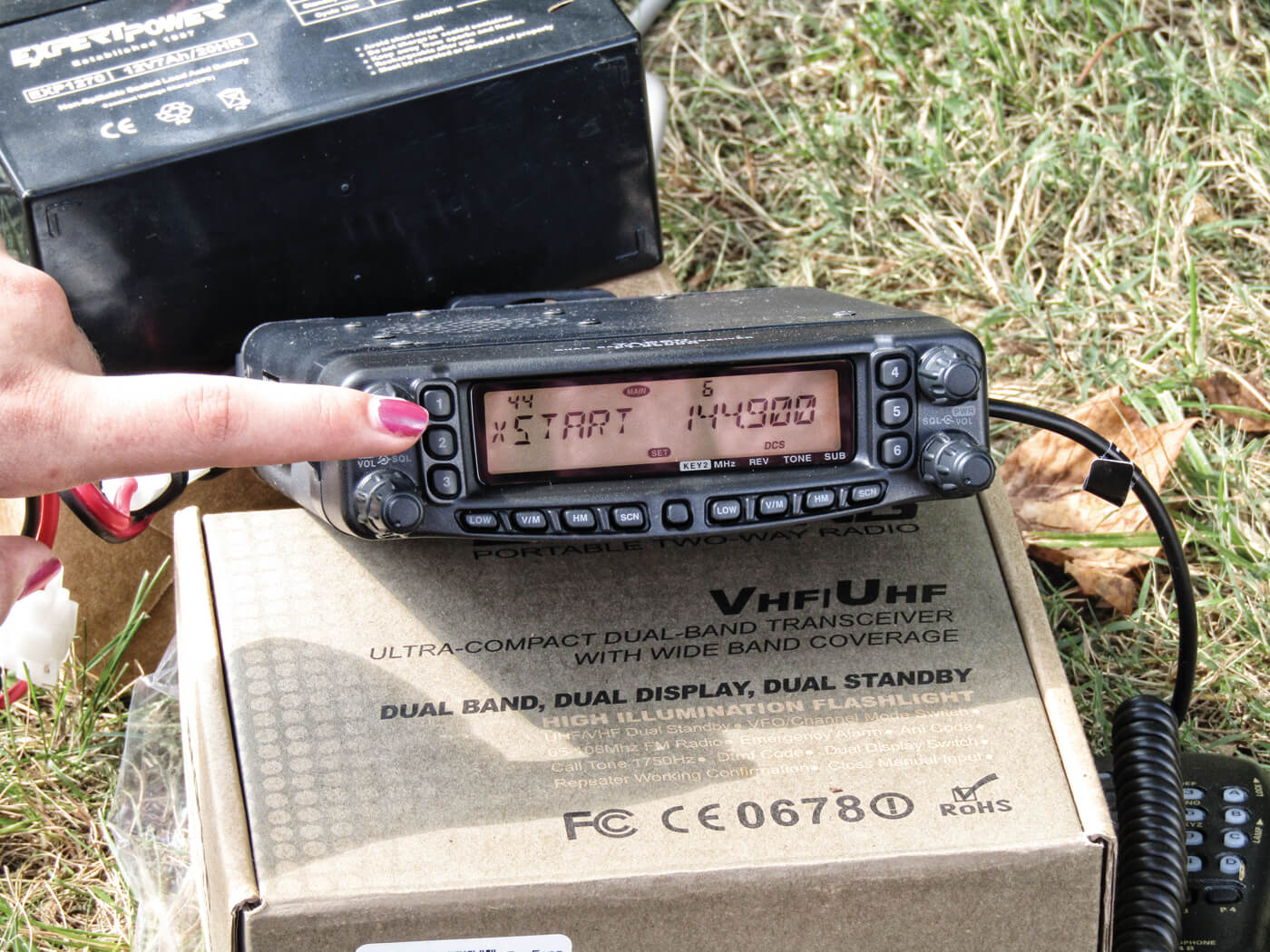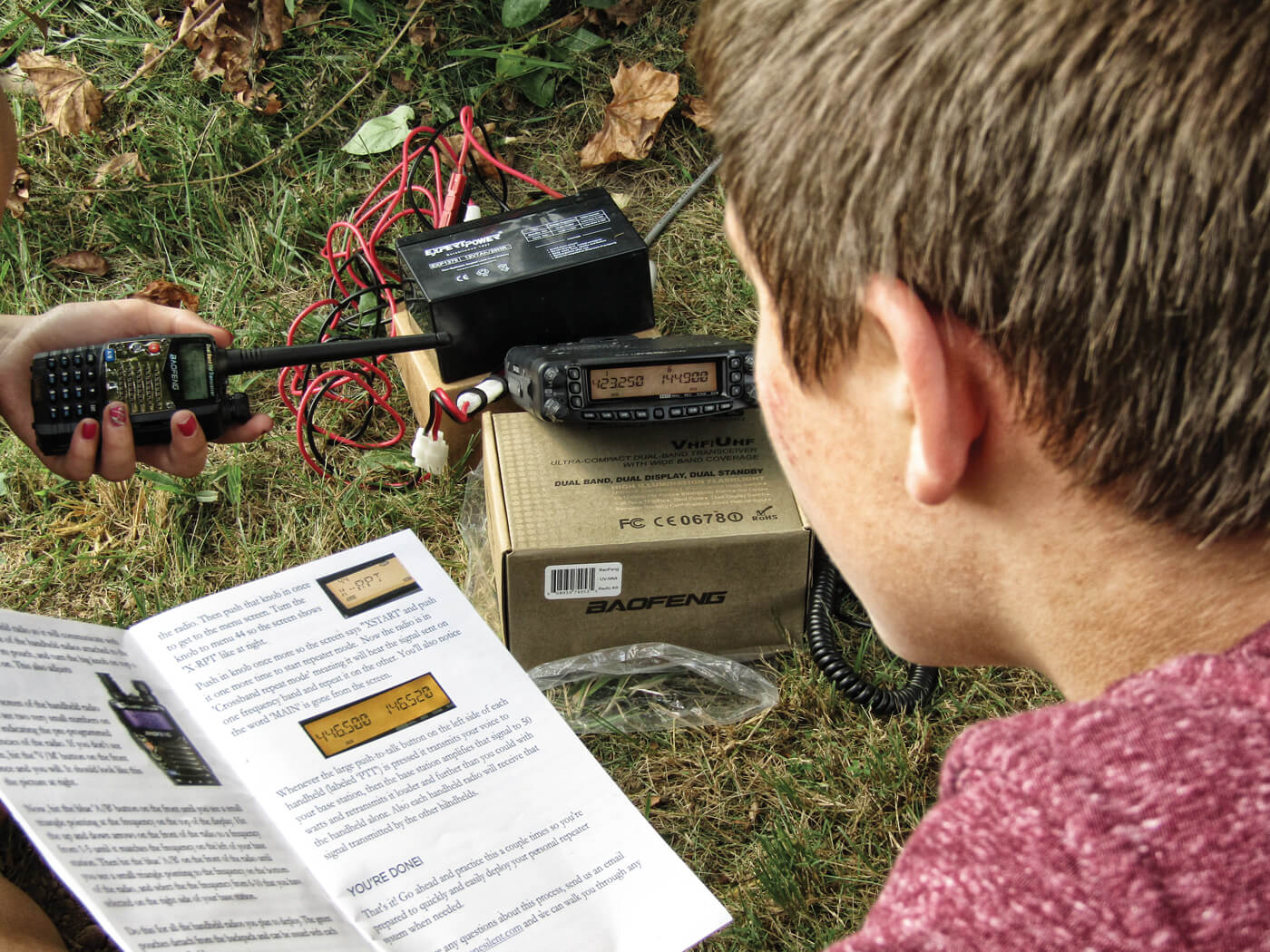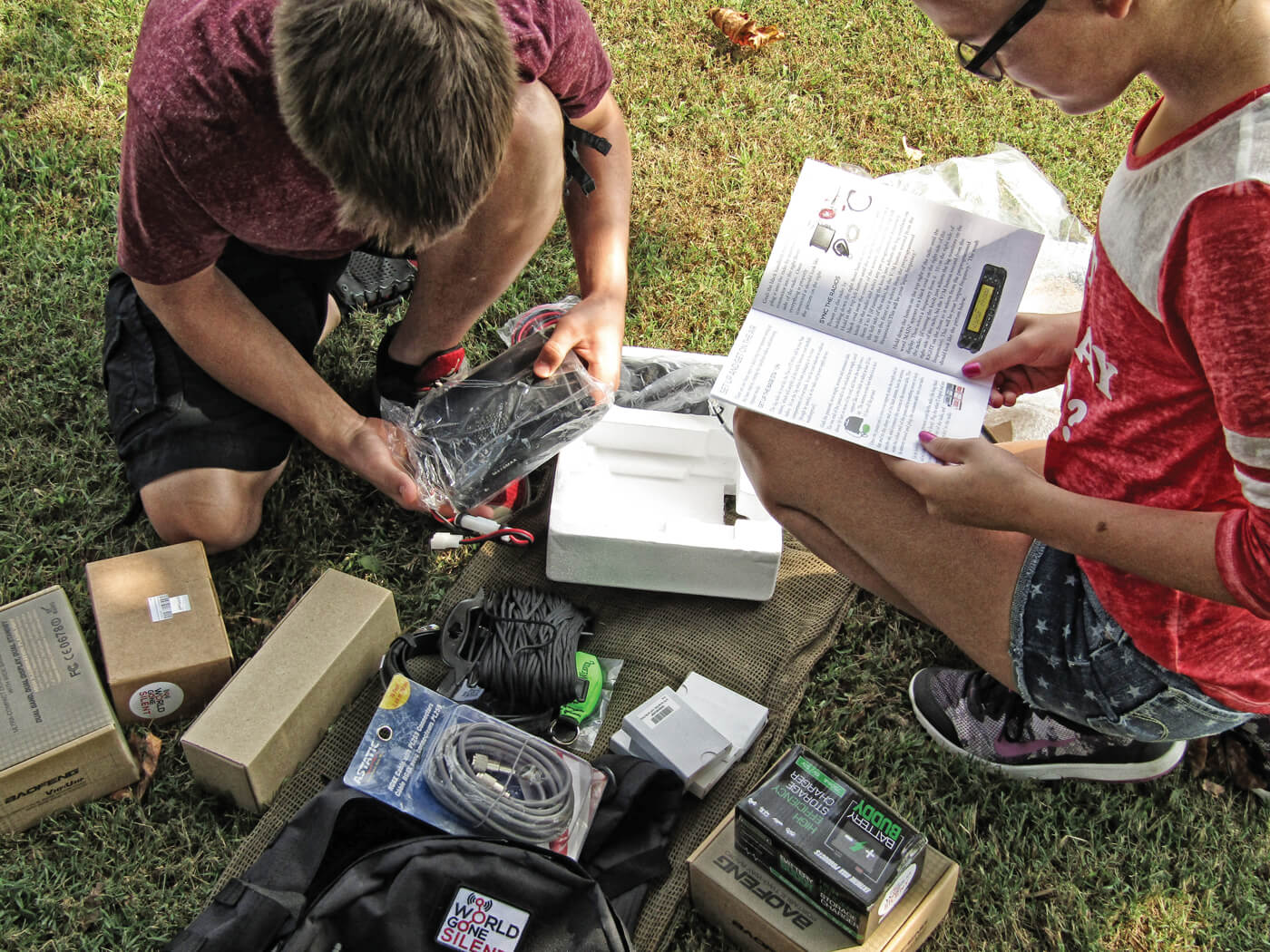Testing World Gone Silent radio kits in the hands of novices
Amateur radio operators depend on repeaters for much of their local communications. By taking advantage of a repeater’s higher power output and more effective antenna system, any station within range—be it a portable Handie Talkie (HT), base or mobile station—can enjoy reliable communication far beyond what it would normally be capable of on its own.

A repeater listens for, and retransmits, signals from radios that have been configured to access it, and its antenna is usually mounted very high above the ground, giving it the ability to reach over terrain that would normally prevent stations from talking to one another at ground level.
Metropolitan areas usually have multiple repeaters that provide coverage on the 2 meter VHF (144 MHz) and 70 centimeter UHF (440 MHz) ham bands. Repeaters use coordinated frequencies to prevent interference when operating within the same band. Sometimes, additional settings are used to reduce interference from repeaters in adjacent towns that operate on the same frequency.
To access a repeater, pertinent information, such as frequency and access code, must be programmed into the user’s radio. This information is available in printed directories and online sources. However, without good instruction or practice, information can be frustratingly difficult to program into a radio.
WHEN THE LIGHTS GO OUT

In an emergency situation, communicating with your friends and family could depend on amateur radio. Having access to repeaters, many of which have backup power to keep them on the air in grid-down conditions, can allow you to keep in touch when all other means have failed.
Chandler Friedman understands this. In his experience with ham radio, and as an emergency coordinator in Atlanta, Georgia, he recognized the need for a kit that would enable anyone—regardless of his or her technical ability—to quickly get on the air. He started putting together the necessary gear and created a deluxe kit that would do just that … and founded World Gone Silent, LLC. Since the introduction of its first basic kits, World Gone Silent has expanded its lineup to include an advanced, yet easy to deploy, repeater kit.
At our request, Friedman sent American Survival Guide two kits to review: the Ham Radio Individual Kit and the WGS Repeater Pack. These kits represent the basic and most advanced products World Gone Silent offers at the time of this writing.
THIS IS HAM RADIO … IT MUST BE HARD!
We put the kits to the test, examining the ease of setup and operation, as well as the feasibility of use in an emergency or disaster scenario. For our tests, we chose subjects who had no experience programming a radio and no understanding of what a radio repeater is or does. We just gave them the kit and said, “Go!” The Ham Radio Individual Kit is intended to provide one person with the ability to communicate with others directly or through local repeaters. With the kit in hand, along with the information for a local repeater, we watched to see how they would perform.
The Ham Radio Individual Kit consists of:

- One quality-tested Handie Talkie (BaoFeng UV-5RA), along with the original accessories, rechargeable battery, charging station and manufacturer’s operating manual
- Quality-tested computer programming cable
- Antenna upgrade and AAA battery case
- World Gone Silent’s Quick-Start Manual
- Subscription to Ham Test Online
- A durable, military-style backpack.
Following the instructions in the World Gone Silent manual, our testers were able to quickly program the repeater information into the HT and successfully access the repeater. As far as performance is concerned, solid contact was established with other hams on a repeater more than 20 miles away.
This kit is intended for those who know little about radio communications. Nevertheless, with all necessary items at hand, our testers were on the air in just a few minutes.
Keep in mind that transmitting on amateur radio frequencies does require a license (except under certain circumstances), and to get the most out of these kits, it is necessary to be licensed. To quote Friedman, “It’s important to me that people get licensed, which is why all my starter kits include a subscription to Ham Test Online. Not only is getting licensed responsible, but I believe that a radio, like a firearm, is useless if you don’t understand how it works.”
The Ham Radio Individual Kit weighs in at about 3 pounds, and there is room in the backpack for additional gear. Its advertised MSRP is $219.
The HT in this kit can also be programmed to work with the WGS Repeater Pack, which we tested next.
The WGS Repeater Pack comes in a larger backpack that contains:

- A preconfigured and tested transceiver for use as a repeater, along with all the original accessories and the manufacturer’s operating manual
- Rechargeable battery and AC-powered charger; post-type battery clamps
- Roll-up antenna and coaxial cable
- 100 feet of paracord on a line holder with a high-visibility, weighted pouch
- Four Handie Talkies (the same model as is included in the Ham Radio Individual Kit), along with all original accessories, manuals and one computer programming cable. (Note that the use of the computer programming cable requires programming software, such as CHIRP, which is not included in this pack but is available for free download at www.Chirp.Danplanet.com.)
- Nylon belt pouch and AAA battery case for each HT
- World Gone Silent’s Repeater Kit Quick-Start Manual
The subjects chosen for this test were not only non-hams; they were also a brother-and-sister team, both in their early teens. They grabbed the kit and went off to set up a temporary repeater station.
The heart of the WGS Repeater Pack is the very capable Yaesu FT-8900R, a quad-band FM transceiver (covering the 10, 6 and 2 meter and 70 centimeter ham bands) with cross-band repeat capability. As shipped from World Gone Silent, it is configured to operate as a repeater using the 2 meter VHF and 70 centimeter UHF bands.
With preprogrammed channels already stored in memory, pressing a couple of buttons is all that is required to start the repeater function. All original radio functions work and can be accessed by following the directions in the manufacturer’s operating manual.
The WGS Repeater Pack includes a 12-volt, 7 Ampere-hour (Ah), sealed lead acid (SLA) battery for use in the field. SLA batteries are spill proof and can be stored, transported and used in any position. All electrical connections are equipped with color-coded connectors for quick, foolproof setup.
Friedman selected the perfect antenna for this kit: The convenient, roll-up J-Pole antenna is used extensively by amateurs for emergency communications because it is lightweight, durable and takes up very little space in the pack. Using the weighted pouch tied to the paracord, it was easy to toss the line over a tree branch and hoist the antenna into the air; and there was ample coax to get it high enough to be effective.
The BaoFeng UV-5RA HTs are programmed with the same frequencies as those in the repeater. Simply select the same channel numbers, and you’re ready to go.
Working as a team, and following the steps in the World Gone Silent Repeater Kit manual, the youngsters had the repeater deployed and ready in fewer than 20 minutes. Testing confirmed that it worked with all four HTs.
The repeater performed quite well; radio communications were solid—well beyond what was possible using the Radio Individual Kit does just that. And in the case of the WGS Repeater Pack, rapid deployment of an effective repeater station is so easy that inexperienced children can do it.
The kits we tested performed as advertised, and they allowed non-radio-savvy people to quickly get on the air.
The Ham Radio Individual Kit could be stashed in the trunk of the car for a college student or commuting spouse, along with a list of repeaters thrown in a backpack. The WGS Repeater Pack could be stored in a closet, storm shelter or bug-out cabin. Just about any situation requiring reliable communications can be addressed with these kits.
EXPERT GUIDANCE
World Gone Silent equips its kits with quality gear. However, perhaps the most valuable component is the Quick-Start Manual, created and copyrighted by Chandler Friedman. When our testers relied solely on the manufacturer’s documentation, they became confused, but with the quick-start manual, Friedman’s expert guidance led them step by step to success every time. At first glance, these kits might seem expensive, but the results we observed proved that the prices were completely reasonable. While no support was needed during our test, we did contact World Gone Silent using the information listed in the manual and received prompt attention directly from Friedman.
(770) 765-2976


